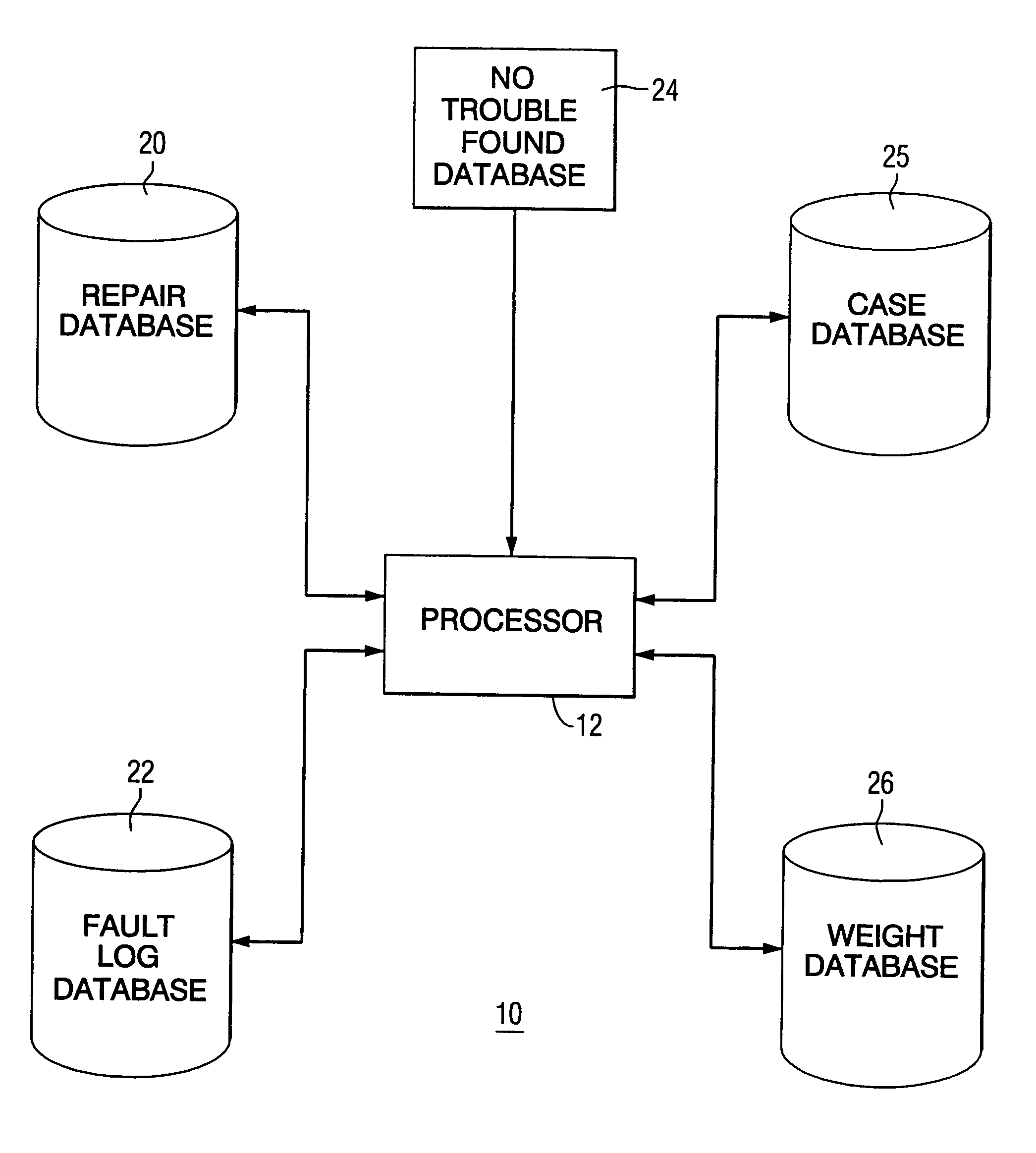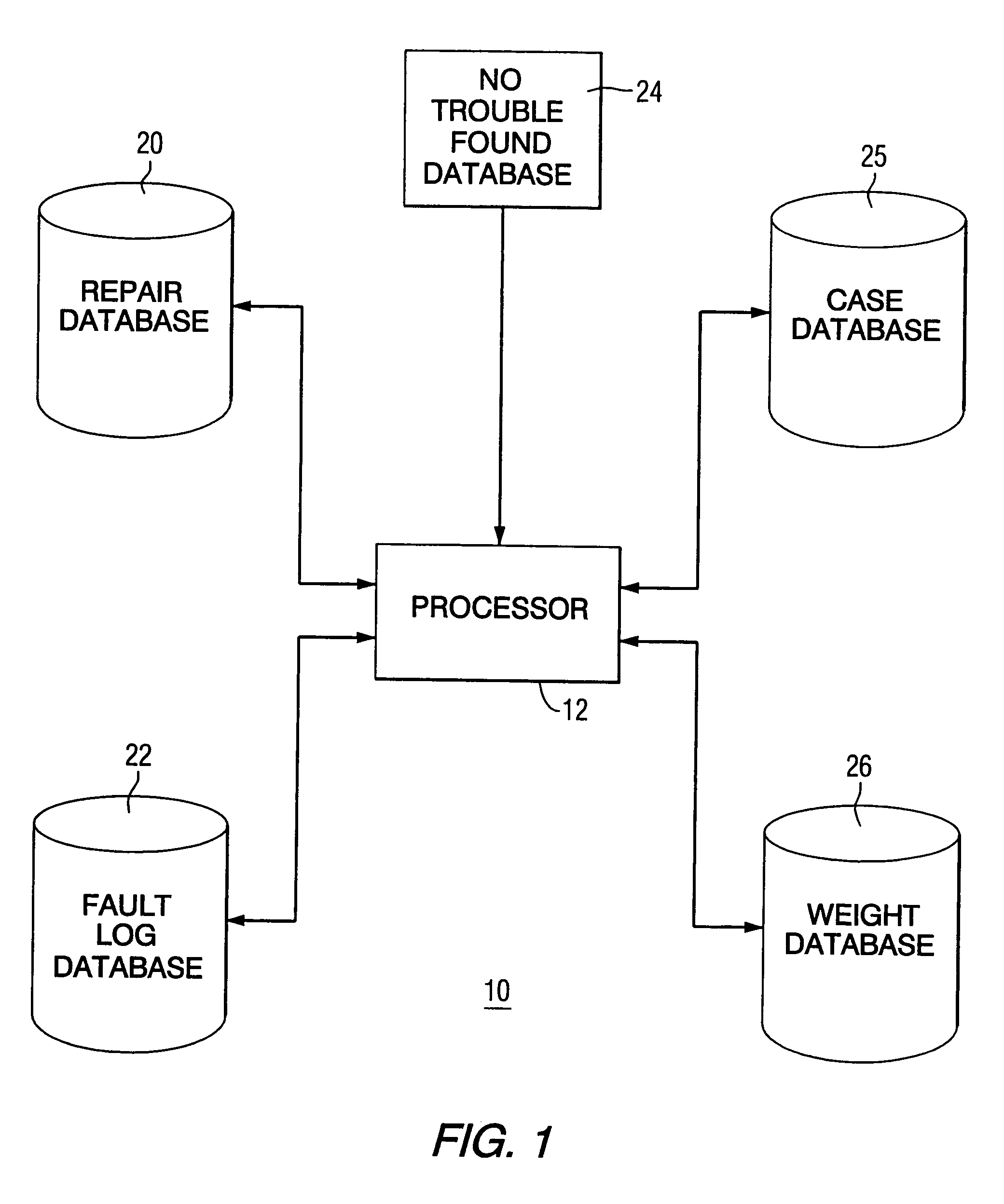Method and apparatus for diagnosing difficult to diagnose faults in a complex system
a complex system and fault technology, applied in the field of machine diagnostics, can solve problems such as difficult for field engineers to accurately review and comprehend information and successfully diagnose faults, complex machines may generate error logs, and limited scope of rules or knowledge stored in the repository
- Summary
- Abstract
- Description
- Claims
- Application Information
AI Technical Summary
Benefits of technology
Problems solved by technology
Method used
Image
Examples
Embodiment Construction
[0027]FIG. 1 diagrammatically illustrates one embodiment of the diagnostic system 10 of the present invention for analyzing no trouble found events to identify fault patterns and correlations of these patterns with certain faults. The diagnostic system 10 provides a process for automatically harvesting or mining repair data describing related and unrelated repairs and fault log data from one or more machines, such as locomotives. The diagnostic system 10 generates weighted repair and distinct fault cluster combinations that are diagnostically significant predictors of the repair action that will resolve a newly identified fault in a malfunctioning machine, including a no trouble found event. Thus, the historical data facilitate later analysis of new fault log data from a malfunctioning locomotive. In one embodiment of the invention, the diagnostic system 10 can jointly analyze the fault log and data operational parameters from the malfunctioning locomotive.
[0028]Although the present...
PUM
 Login to View More
Login to View More Abstract
Description
Claims
Application Information
 Login to View More
Login to View More - R&D
- Intellectual Property
- Life Sciences
- Materials
- Tech Scout
- Unparalleled Data Quality
- Higher Quality Content
- 60% Fewer Hallucinations
Browse by: Latest US Patents, China's latest patents, Technical Efficacy Thesaurus, Application Domain, Technology Topic, Popular Technical Reports.
© 2025 PatSnap. All rights reserved.Legal|Privacy policy|Modern Slavery Act Transparency Statement|Sitemap|About US| Contact US: help@patsnap.com



